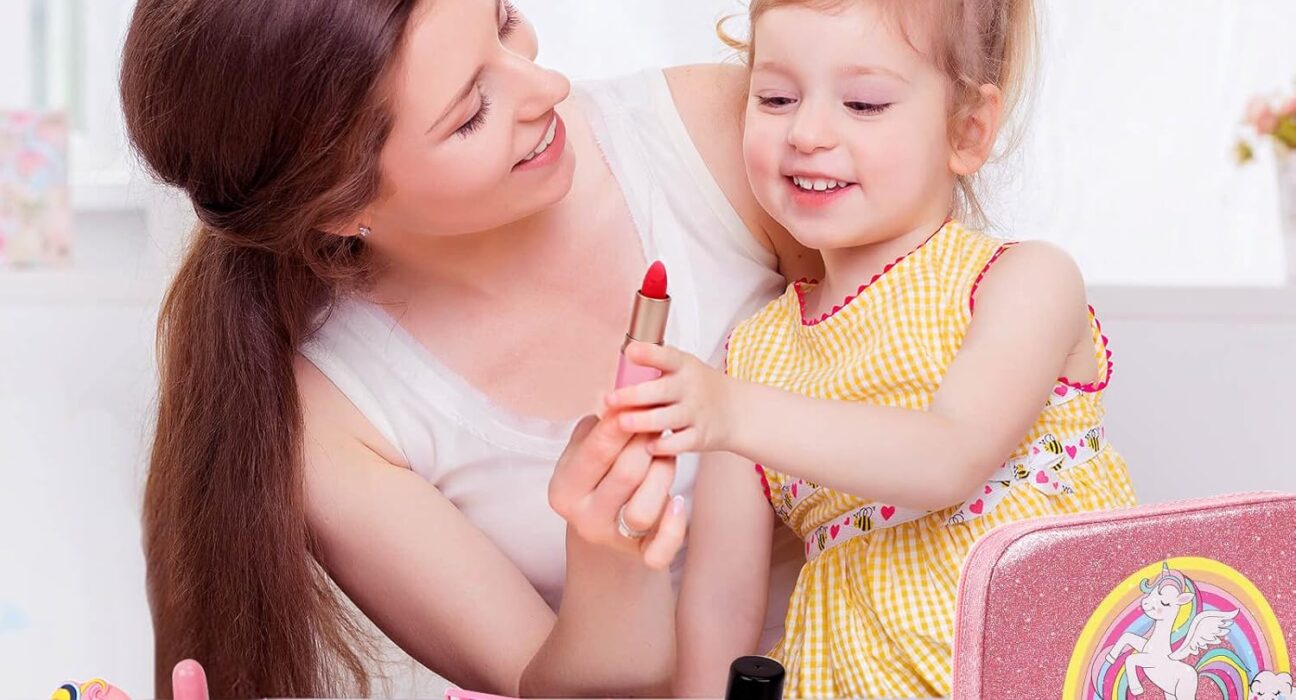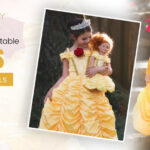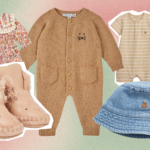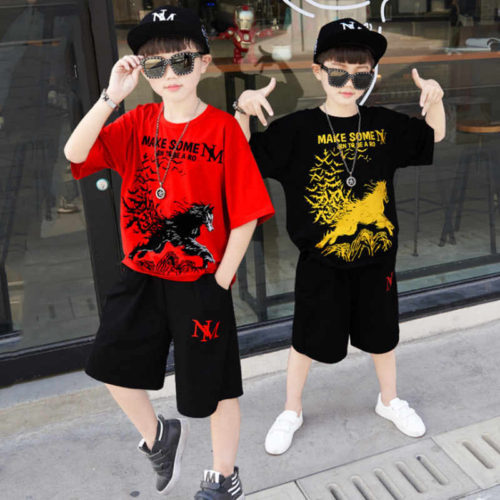Girls can start wearing makeup around the ages of 12 to 14, depending on personal choice and maturity. Each girl is unique, so readiness varies widely.
The decision to wear makeup often depends on cultural norms, personal style, and self-expression. Many girls begin experimenting with makeup during their early teenage years, typically around middle school. This age allows for exploration while still maintaining a youthful appearance.
Parents and guardians play a vital role in guiding this process, ensuring that any makeup use is age-appropriate and encourages confidence. Makeup can enhance natural beauty, but it’s essential for young girls to understand its purpose and application. Ultimately, the right age to start wearing makeup is a personal choice, reflecting individual preferences and comfort levels.
Table of Contents
Introduction To Makeup And Age
Makeup is a way to express creativity. Many girls wonder about the right age to start wearing it. The decision can vary greatly. It depends on personal choice, cultural views, and trends. Understanding these factors helps in making informed decisions.
Cultural Perceptions Of Makeup
Cultural views on makeup differ around the world. In some cultures, girls wear makeup early. In others, it is reserved for special occasions.
- Western Cultures: Makeup often symbolizes maturity.
- Eastern Cultures: Makeup can represent beauty traditions.
- Indigenous Cultures: Makeup may hold spiritual significance.
Parents play a role in shaping these views. Open discussions about makeup can help girls understand its purpose. This can build a healthy relationship with beauty products.
Changing Trends In Makeup Use
Makeup trends change quickly. Social media influences what is popular. Many young girls see makeup tutorials online. They may feel pressured to start wearing makeup earlier.
| Age Group | Common Makeup Products |
|---|---|
| Under 12 | Gloss, Tints |
| 12-15 | Light Foundation, Mascara |
| 15 and up | Full Makeup, Contour |
Understanding trends helps girls make better choices. Parents should guide their daughters through these changes. This helps them choose age-appropriate products.
The Makeup Debate
The decision of when girls should start wearing makeup sparks much discussion. Some believe early exposure is beneficial. Others feel it can lead to pressure and unrealistic standards. Let’s explore both sides of this debate.
Pros Of Early Introduction
- Boosts Confidence: Makeup can help girls feel more self-assured.
- Encourages Creativity: Experimenting with makeup promotes artistic skills.
- Teaches Responsibility: Caring for makeup products fosters responsibility.
- Enhances Social Skills: Sharing makeup tips can build friendships.
Cons Of Early Makeup Use
- Creates Pressure: Young girls may feel pressured to look perfect.
- Unrealistic Standards: Media often promotes unattainable beauty ideals.
- Skin Concerns: Early use can lead to skin problems.
- Focus on Appearance: Shifts focus away from inner qualities.
| Aspect | Pros | Cons |
|---|---|---|
| Confidence | Boosts self-esteem | Can lead to anxiety |
| Creativity | Encourages artistic expression | May distract from academics |
| Social Skills | Builds friendships | Can create cliques |
| Responsibility | Teaches care for products | Can lead to wastefulness |
Age Appropriateness
Determining the right age for girls to start wearing makeup is important. Factors include personal choice, maturity level, and societal influences. Parents should consider developmental milestones and the potential impact of makeup.
Developmental Considerations
Every girl develops at her own pace. Here are some key points:
- Age 8-10: Girls often play with makeup for fun.
- Age 11-12: Many begin experimenting with light makeup.
- Age 13-14: Teens may want to use makeup for self-expression.
- Age 15 and up: Makeup can become part of daily routines.
Observe each girl’s readiness. Look for interest and responsible behavior. Open discussions help guide choices.
Psychological Impacts Of Makeup On Youth
Makeup can influence a girl’s self-esteem and confidence. Consider these points:
| Age Group | Psychological Impact |
|---|---|
| 8-10 | Fun and creativity without pressure. |
| 11-12 | Begins to connect appearance with acceptance. |
| 13-14 | May boost confidence or create pressure to conform. |
| 15+ | Can enhance self-image, but may lead to comparison. |
Positive self-image is crucial. Encourage healthy attitudes towards beauty. Focus on inner qualities rather than just appearance.
Parental Concerns
Parents often worry about their daughters wearing makeup. These concerns range from health risks to social pressures. Understanding these issues helps parents guide their children effectively.
Health Risks Of Cosmetics
Cosmetics can contain harmful chemicals. Parents should be aware of potential health risks:
- Skin irritation or allergic reactions
- Clogged pores leading to acne
- Long-term effects from toxic ingredients
It’s essential to choose safe products. Look for labels that say:
- Hypoallergenic
- Non-comedogenic
- Paraben-free
Using natural or organic makeup can reduce risks. Parents can also encourage proper hygiene. Teach daughters to remove makeup before bed.
Influence Of Social Media
Social media plays a big role in beauty standards. Many young girls see influencers wearing makeup. This can create pressure to conform.
Parents should monitor their children’s social media usage. Here are some tips:
- Discuss beauty standards and their impact.
- Encourage critical thinking about images.
- Promote self-esteem beyond appearance.
Open conversations can help. Parents can ask about their favorite influencers. This builds trust and understanding.
Building Self-esteem Without Makeup
Many girls face pressure to wear makeup early. Building self-esteem without makeup is vital. It helps girls feel confident in their natural beauty. Embracing who they are promotes a positive self-image.
Promoting Natural Beauty
Natural beauty shines through in many ways. Here are some ways to promote it:
- Compliments: Encourage genuine compliments about appearance.
- Healthy Habits: Focus on nutrition and exercise.
- Skincare: Teach good skincare routines.
- Self-Care: Encourage relaxation and mindfulness.
Helping girls appreciate their unique features boosts their confidence. Teach them to love their skin, hair, and eyes. Natural beauty is powerful and should be celebrated.
Activities To Boost Confidence
Engaging in fun activities can enhance self-esteem. Here are some enjoyable options:
- Art Classes: Express creativity through painting or drawing.
- Sports: Join a team to build teamwork and physical skills.
- Dance: Participate in dance classes to feel free and joyful.
- Volunteering: Help others and feel a sense of purpose.
These activities foster a sense of achievement. They create friendships and new skills. Confidence grows when girls focus on their talents and interests.

Credit: www.ocregister.com
Educating About Makeup
Understanding makeup is important for young girls. Makeup can enhance natural beauty. Teaching proper use and care is crucial. This section focuses on two key areas: makeup hygiene and understanding product labels.
Makeup Hygiene
Maintaining makeup hygiene is essential for healthy skin. Here are some important tips:
- Always wash hands before applying makeup.
- Use clean brushes and sponges. Dirty tools can cause breakouts.
- Store makeup in a cool, dry place.
- Check expiration dates regularly. Expired products can irritate skin.
Teaching girls about makeup hygiene helps prevent skin problems. Encourage them to take care of their skin.
Understanding Product Labels
Reading and understanding product labels is vital. Labels provide important information. Here are key components to look for:
| Label Component | Description |
|---|---|
| Ingredients List | Know what’s in the product. Avoid allergens. |
| Expiration Date | Use products before they expire for safety. |
| Allergy Warnings | Look for warnings if you have sensitive skin. |
| Usage Instructions | Follow instructions for best results. |
Understanding labels helps girls make safe choices. Encourage them to ask questions about products.
Setting Boundaries
Setting boundaries around makeup is crucial for young girls. It helps them understand when and how to use makeup responsibly. Clear rules guide them in making wise choices. These boundaries can also strengthen the parent-child relationship.
Creating Makeup Rules
Establishing clear makeup rules is essential. Here are some effective rules to consider:
- Age Guidelines: Start with light makeup at a younger age.
- Occasions: Allow makeup for special events only.
- Types of Makeup: Focus on natural looks for beginners.
- Time Limits: Set a time limit for daily makeup use.
These rules help girls feel comfortable while learning. They promote healthy habits and confidence.
Negotiating Makeup Usage
Negotiation is key in setting boundaries. Involve your child in discussions about makeup. Here are ways to negotiate:
- Discuss Interests: Ask what makeup they want to try.
- Explain Reasons: Share why certain rules exist.
- Offer Choices: Allow them to choose from approved items.
- Set Trial Periods: Allow limited makeup for a month.
This approach empowers girls. They learn decision-making skills. It builds trust and respect between parents and children.
Special Occasions And Makeup
Special occasions often call for a touch of makeup. Events like birthdays, weddings, or holidays bring excitement. Makeup can enhance a girl’s natural beauty. It creates confidence and makes the day even more memorable.
Gradual Introduction
Introducing makeup gradually is key. Start with light applications. Here are some tips:
- Begin with lip gloss or tinted lip balm.
- Apply a little blush for a natural glow.
- Use clear mascara for subtle enhancement.
This way, girls can feel comfortable. They can learn to express their creativity. Let them explore colors and styles that suit them.
Establishing Guidelines For Events
Setting guidelines helps manage expectations. Here are some essential points:
| Occasion | Recommended Makeup |
|---|---|
| Birthday Parties | Light makeup, like lip gloss and blush. |
| Weddings | Soft eye shadow, mascara, and a hint of lipstick. |
| School Events | Minimal makeup, like tinted moisturizer and blush. |
| Holiday Gatherings | Fun colors, but keep it light and festive. |
Encourage girls to choose age-appropriate options. Teach them to feel beautiful inside and out. Remind them that makeup is fun, not a requirement.
The Role Of Peers And Trends
Peer influence plays a big part in young girls’ decisions about makeup. Friends and social circles often set the standard for beauty. Trends can change quickly and create pressure to conform. Understanding this influence is key for parents and guardians.
Peer Pressure
Peer pressure can be both positive and negative. Many girls feel they must wear makeup to fit in. Here are some effects of peer pressure:
- Increased desire to wear makeup.
- Feeling judged without makeup.
- Comparison with friends’ looks.
Some girls start wearing makeup just to feel accepted. Others may resist due to personal choices. Parents can help by discussing these pressures openly.
Current Makeup Fads Among Teens
Trends in makeup change rapidly. Today’s popular styles include:
- Natural looks with minimal products.
- Bold eyes with colorful eyeliner.
- Glitter and shimmer for special occasions.
Girls often follow social media influencers. Platforms like Instagram and TikTok showcase these trends. This can create excitement about trying new products.
| Trend | Description |
|---|---|
| Natural Makeup | Light foundation and subtle colors. |
| Bold Eye Makeup | Bright colors and striking eyeliners. |
| Glitter | Used for parties and events. |
Parents should stay informed about these trends. Open conversations can help girls make better choices about makeup. Understanding peer influence is crucial for healthy self-esteem.

Credit: www.youtube.com
Alternatives To Makeup
Many girls feel pressured to wear makeup. They often think makeup is the only way to express themselves. However, there are many great alternatives to makeup. These options can enhance natural beauty without using cosmetics.
Skincare Routines For Teens
Healthy skin is the best canvas. A good skincare routine helps girls feel confident. Here are some essential steps:
- Cleansing: Use a gentle cleanser twice a day.
- Moisturizing: Keep skin hydrated with a light moisturizer.
- Sun Protection: Always apply sunscreen to protect from UV rays.
- Exfoliating: Exfoliate once a week for fresh skin.
- Hydrating: Drink plenty of water daily.
These simple steps help maintain healthy skin. A good routine can boost confidence without makeup.
Creative Outlets Beyond Cosmetics
Girls can express themselves in many ways. Here are some fun alternatives:
- Art: Drawing, painting, or crafting can be very enjoyable.
- Fashion: Experimenting with outfits can show unique style.
- Hair Accessories: Using colorful clips or headbands adds flair.
- Nail Art: Painting nails can be a fun way to express creativity.
These creative outlets provide great ways to shine. Girls can feel beautiful and confident without relying on makeup.
When To Say Yes To Makeup
Deciding when to let girls wear makeup is a big step. Many factors influence this choice. Age is just one of them. Understanding signs of maturity is essential. Responsible makeup practices also play a key role.
Signs Of Maturity
Recognizing signs of maturity helps determine the right time for makeup. Here are some important indicators:
- Emotional Readiness: Can they handle compliments and criticism?
- Understanding of Purpose: Do they know why they want to wear makeup?
- Respect for Rules: Will they follow guidelines about makeup use?
- Self-Expression: Is makeup a way for them to express themselves?
Each sign shows a level of responsibility. These signs may vary for each girl. Parents should observe closely.
Responsible Makeup Practices
Teaching responsible makeup practices ensures a positive experience. Here are some key practices to follow:
| Practice | Description |
|---|---|
| Start Small | Encourage light makeup for a natural look. |
| Quality Products | Choose safe, hypoallergenic makeup brands. |
| Application Skills | Teach proper techniques for applying makeup. |
| Daily Removal | Emphasize the importance of removing makeup daily. |
| Limit Usage | Set limits on when and where they can wear makeup. |
By implementing these practices, girls can enjoy makeup responsibly. This approach fosters confidence and self-expression.
Navigating The Makeup Aisle
Choosing makeup can be fun yet overwhelming. Many products line the shelves. It’s important to know what to look for. Understanding makeup basics helps make better choices. This ensures a positive experience for young girls.
Choosing The Right Products
Picking the right makeup products is crucial. Start with simple items. Here are some suggestions:
- Tinted Moisturizer: Offers light coverage and hydration.
- Tinted Lip Balm: Adds color without being too bold.
- Light Blush: Gives a natural flush to the cheeks.
Look for products labeled as non-comedogenic. This means they won’t clog pores. Always opt for products designed for young skin. Try to choose items that are easy to apply.
Avoiding Harmful Ingredients
Safety is key in makeup selection. Many products contain harmful ingredients. Check labels carefully. Here are some ingredients to avoid:
| Ingredient | Why Avoid? |
|---|---|
| Parabens | Linked to health issues. |
| Sulfates | Can irritate the skin. |
| Fragrance | May cause allergies. |
Choose products with natural ingredients. They are gentler on the skin. Always perform a patch test before trying new products. This helps avoid allergic reactions.
Conversations About Beauty Standards
Beauty standards greatly influence young girls today. These standards often come from various sources, especially media. Discussions about these standards are essential for healthy self-image. Understanding beauty can empower girls to make informed choices about makeup.
Media’s Portrayal Of Beauty
The media plays a significant role in shaping beauty ideals. Images in magazines, TV shows, and social media set unrealistic expectations. Girls often compare themselves to these images, leading to low self-esteem.
- Social media influencers often showcase perfect looks.
- Advertisements promote products that promise beauty enhancements.
- Television and films often depict narrow beauty standards.
These portrayals can make girls feel pressured to wear makeup at a young age. It’s crucial to recognize the difference between reality and media representation.
Encouraging Critical Thinking
Critical thinking helps girls question beauty norms. Parents and mentors can guide discussions about beauty standards. Encourage girls to ask questions and think deeply about what they see.
- What message does this image send?
- Is this beauty standard realistic for me?
- How does this make me feel about myself?
By fostering critical thinking, girls can build a positive self-image. They learn that beauty comes in many forms. This understanding can help them make wise choices about makeup.
| Media Influence | Impact on Girls |
|---|---|
| Magazines | Unrealistic body images |
| Social Media | Pressure to conform |
| TV Shows | Narrow definitions of beauty |
Empowering Through Education
Education plays a vital role in young girls’ makeup journey. It helps them make informed choices. Teaching about makeup can boost confidence and self-expression. Understanding makeup empowers girls to feel comfortable in their own skin.
With the right knowledge, they can explore creativity. Education promotes healthy habits and skin care awareness. Workshops and online resources offer excellent opportunities for learning.
Workshops And Classes
Workshops provide hands-on experiences. Girls learn practical skills and techniques. Here are some benefits of attending workshops:
- Expert Guidance: Professionals teach makeup application.
- Safe Environment: Girls practice without pressure.
- Peer Interaction: They connect with friends and others.
Some popular types of workshops include:
| Type of Workshop | Description |
|---|---|
| Beginner Makeup | Focuses on basic skills and techniques. |
| Special Effects Makeup | Teaches creative and theatrical applications. |
| Skincare Basics | Emphasizes skin health before makeup. |
Online Resources For Parents And Teens
Online resources are abundant. They provide valuable information and tutorials. Here are some useful types:
- YouTube Tutorials: Visual guides for all skill levels.
- Blogs: Articles on makeup tips and trends.
- Social Media: Influencers share techniques and products.
Parents can explore these resources too. They can better understand makeup and its implications. This knowledge helps in guiding their daughters.
Empowering young girls through education is crucial. It helps them enjoy makeup responsibly and confidently.
Conclusion: Personal Choice And Guidance
Choosing when to start wearing makeup is a personal decision. Each girl is different. Factors include maturity, self-expression, and individual comfort levels.
Balancing Autonomy And Safety
Girls should feel empowered to make choices about their appearance. It’s crucial to balance this autonomy with safety. Here are some points to consider:
- Understand skin sensitivity.
- Choose age-appropriate products.
- Learn proper application techniques.
- Discuss potential reactions to makeup.
Parents can guide girls in making safe choices. Open discussions help ensure healthy practices.
Fostering Open Communication
Communication is key in this journey. Encourage girls to express their feelings about makeup. Here are a few tips:
- Ask about their favorite makeup looks.
- Discuss why they want to wear makeup.
- Share experiences and lessons learned.
- Set clear guidelines together.
Open dialogue builds trust. It helps girls navigate their choices confidently.
Frequently Asked Questions
What Age Do Most Girls Start Wearing Makeup?
Most girls begin experimenting with makeup around 12 to 14 years old, influenced by trends and social circles.
Is It Okay For Young Girls To Wear Makeup?
Yes, wearing makeup can be a fun form of self-expression for young girls, but moderation is key.
What Types Of Makeup Are Suitable For Beginners?
Beginner-friendly makeup includes tinted moisturizer, lip balm, and light mascara, focusing on enhancing natural beauty.
How Can Parents Approach Makeup With Their Daughters?
Open discussions about makeup preferences, guidelines, and age-appropriate choices can help establish trust and understanding.
Should Schools Have Makeup Policies For Students?
Schools may consider makeup policies to promote a focused learning environment while respecting students’ self-expression.
Conclusion
Determining the right age for girls to start wearing makeup varies by individual. It’s essential to consider maturity and personal choice. Parents should guide their daughters in making informed decisions. Ultimately, the focus should be on confidence and self-expression. Let girls embrace their beauty at a pace that feels right for them.







